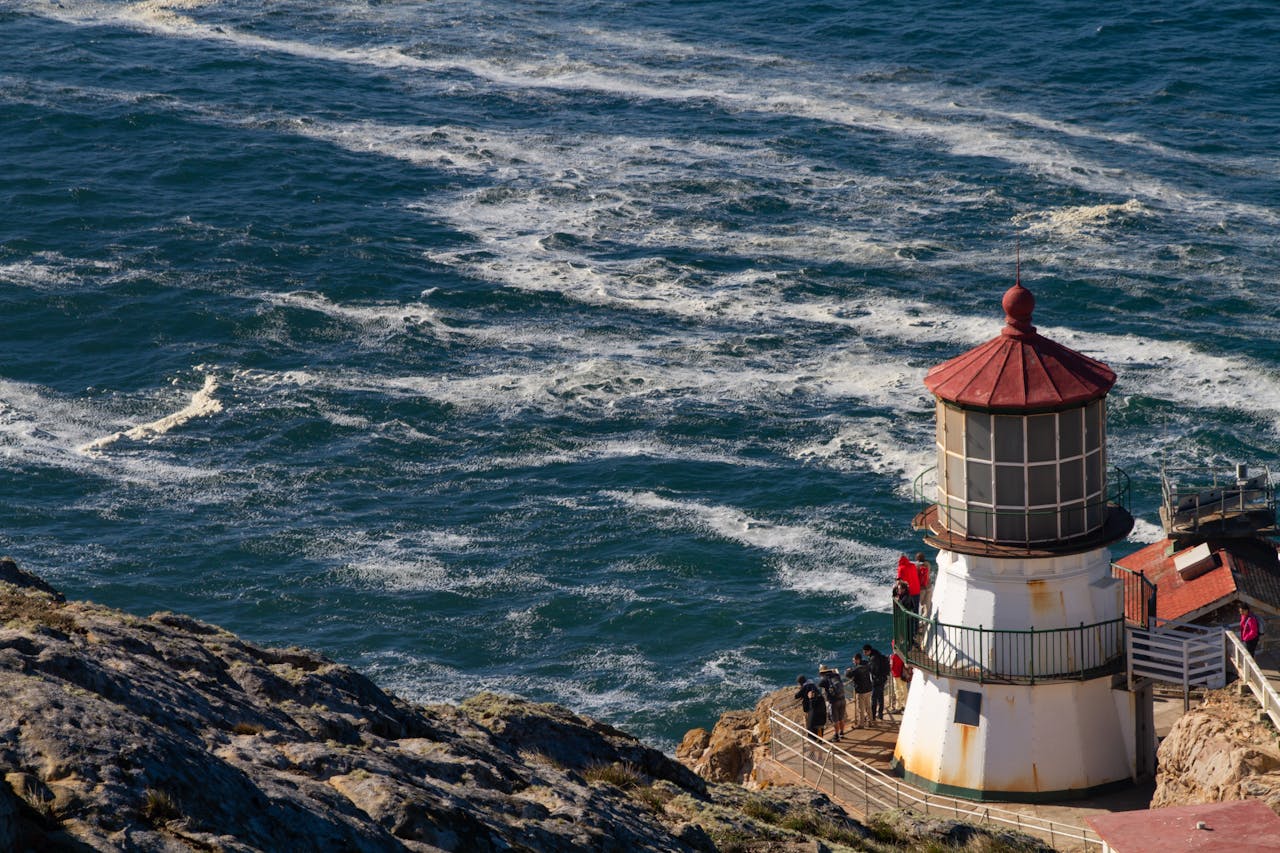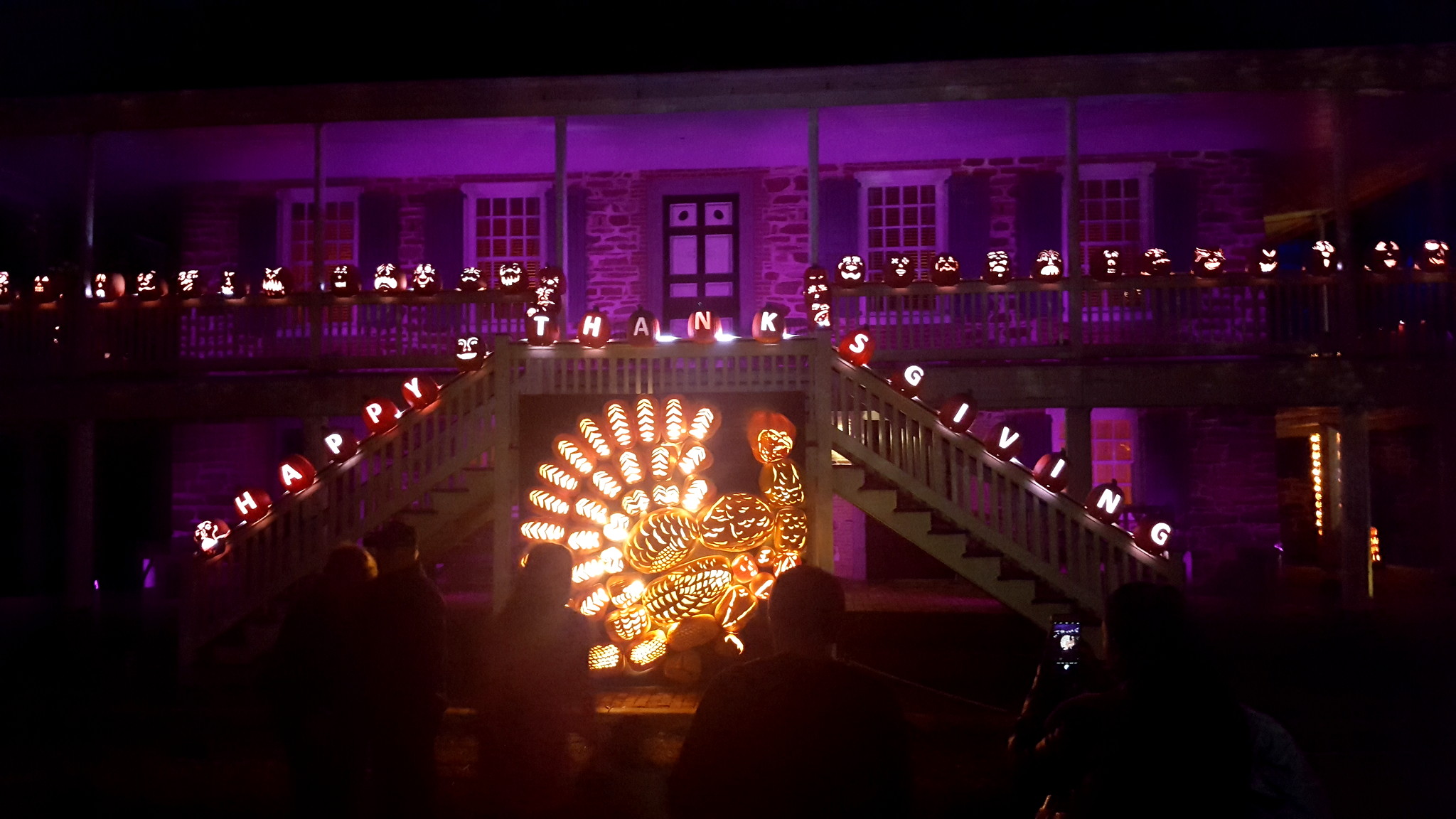America’s coasts still hide quiet towers that guided ships long before GPS. Many were decommissioned in the mid 1900s as automation and new channels arrived, but the structures remain. You can reach some by ferry or trail and others from shoreline overlooks or seasonal tours. Expect short museum exhibits, weathered brick, and big ocean views. Tides and wind matter, so check local conditions and access rules. These stops add real history to any beach trip and turn a simple walk into a story you will remember.
1. Old Point Loma Lighthouse, California

Built in 1855 and retired in 1891 because fog made the light too high to see, Old Point Loma sits inside Cabrillo National Monument. The lantern room is a compact museum and the keeper’s quarters show what daily life looked like in the 1800s. The site stands over 400 feet above the Pacific, so vistas stretch far on clear days. You cannot climb the tower, but the rooms and trails make this one of the easiest decommissioned lighthouses to visit while you explore San Diego’s tip.
2. Pigeon Point Lighthouse, California

Pigeon Point’s 115 foot tower from 1872 is among the tallest on the West Coast. The beacon was turned off in 2002 for safety repairs, yet the grounds and visitor center remain open and the old keeper’s quarters serve as a coastal hostel. Tidepools and whale watching draw crowds in spring. You cannot enter the tower, but the classic first-order Fresnel lens display is nearby, and sunset silhouettes make this a favorite stop along Highway 1 for photographers planning a golden hour visit.
3. Point Reyes Lighthouse, California
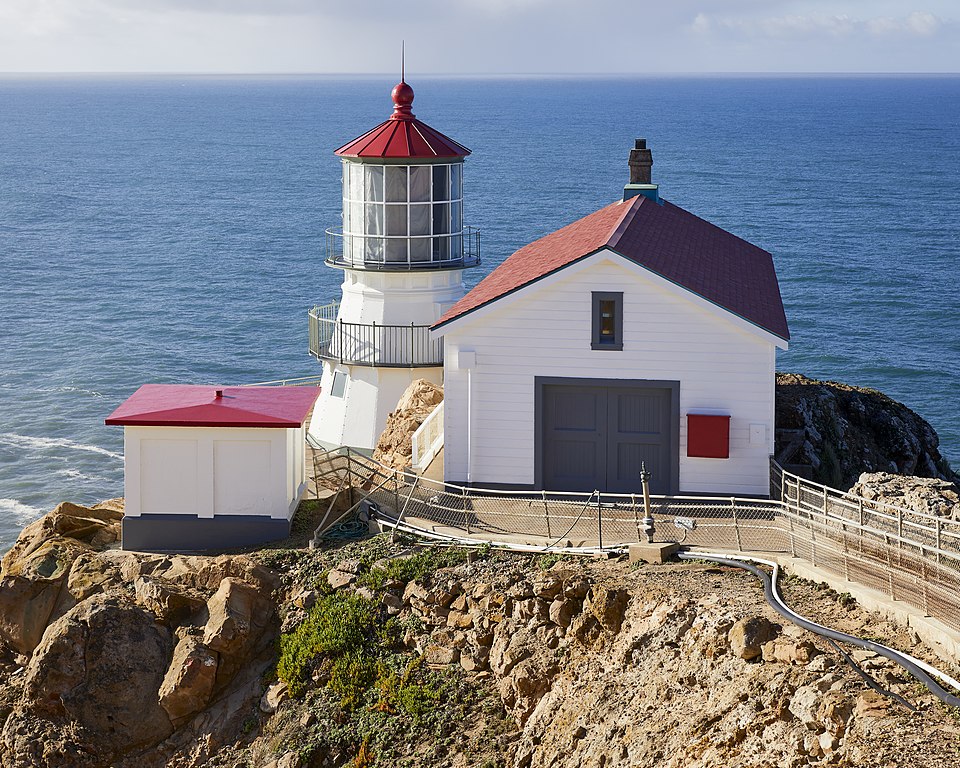
Perched on a cliff at the end of 308 steps, Point Reyes Lighthouse first lit in 1870 and later shifted to museum status as modern aids took over. The headlands are among the foggiest and windiest places on the West Coast, so pack layers even in summer. Visitor hours vary with weather and maintenance. Exhibits explain shipwrecks offshore and how keepers managed fuel, lenses, and storms. The descent is steep, but platforms along the stairs offer safe viewpoints for photos of surf and seabirds.
4. Battery Point Lighthouse, California
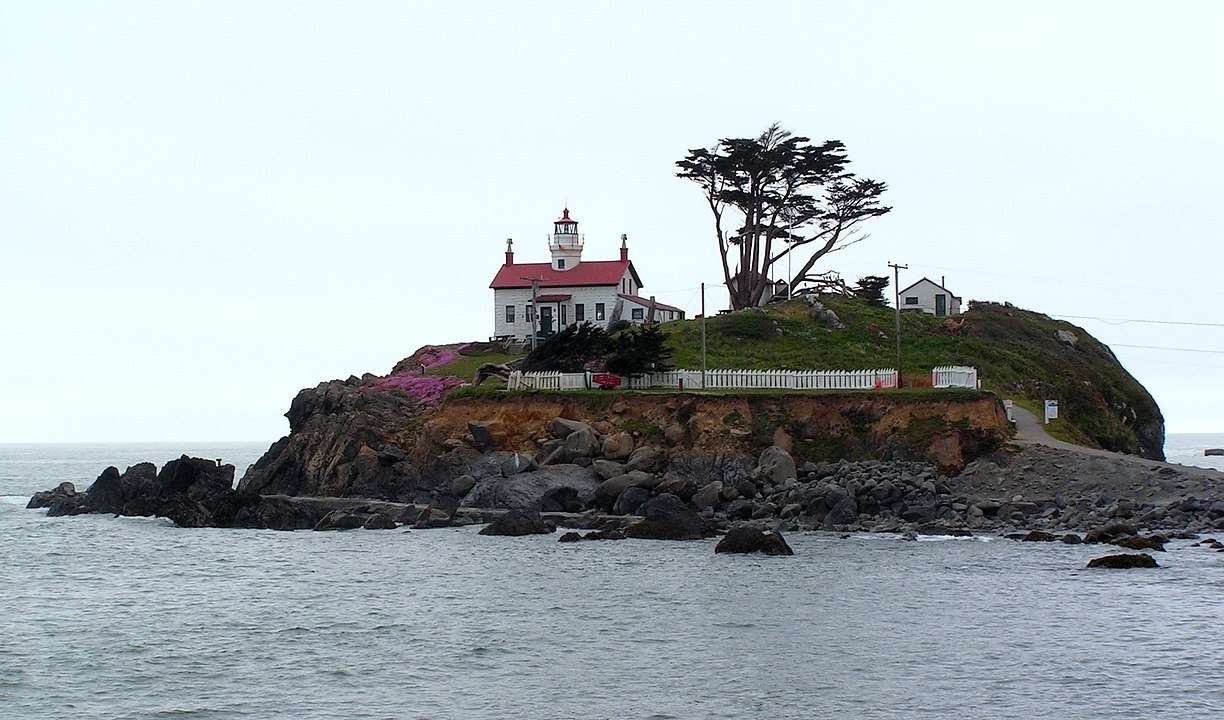
Battery Point in Crescent City opened in 1856 and sits on a tidal island reached by a causeway that appears at low tide. The small museum shows keeper tools and logbooks, and the parlor still feels like a home. Check tide charts because the path floods fast when water rises. On calm mornings you can watch crab boats and coastal birds from the yard. Tours may pause in rough weather, but even an outside visit delivers close views of stonework, the lantern house, and the harbor.
5. Punta Gorda Lighthouse, California

Remote and wild, Punta Gorda was built in 1911 and decommissioned in 1951. Reaching it means a rugged hike along the Lost Coast in the King Range, with soft sand, creek crossings, and sections that require a low tide window. The compact tower and keeper ruins sit on an open bluff where wind is common. Bring water, sturdy shoes, and a tide plan. The isolation shows why light stations were once full communities with supplies arriving by boat, pack animal, or beach wagon.
6. Cape Arago Lighthouse, Oregon
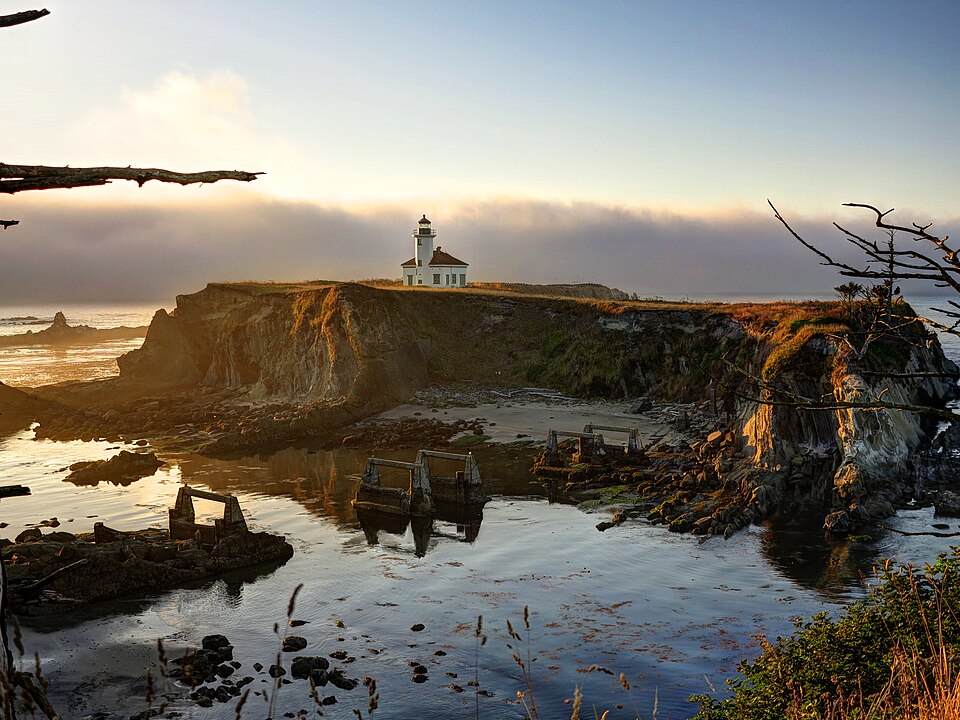
Cape Arago’s current tower dates to 1934 and the light went dark in 2006. The island site is closed, but you can see the lighthouse clearly from Shore Acres and Simpson Reef viewpoints near Coos Bay. Winter swells send dramatic spray against the rocks and sea lions haul out on nearby reefs. Binoculars help with details like the white tower and support buildings. This is a perfect quick stop on the Oregon Coast when you want history, wildlife viewing, and easy parking in one place.
7. Old Baldy Lighthouse, North Carolina
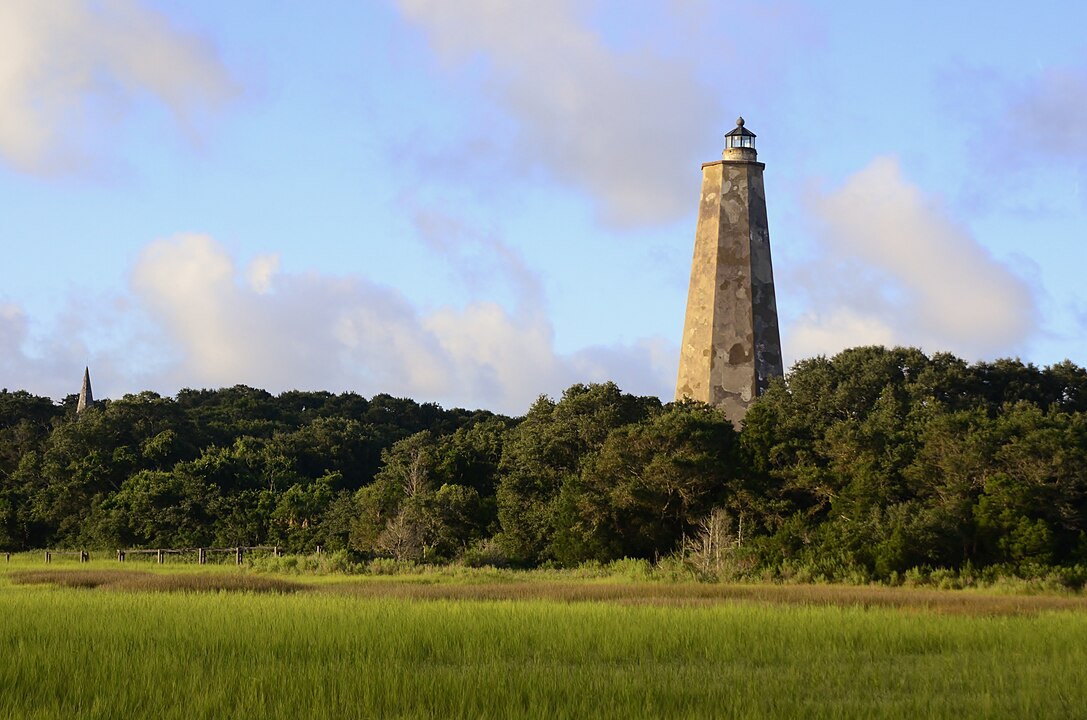
Old Baldy on Bald Head Island is North Carolina’s oldest standing lighthouse, completed in 1817 and retired in 1935. A short ferry ride from Southport brings you to bike paths, a small museum, and sandy views of the Cape Fear region. The tower’s stucco skin shows patches from centuries of weather. Climb the internal stairs when open for a panorama of marsh and inlet. The station tells a clear story of shifting shoals, pilots guiding ships, and how coastal trade shaped early towns.
8. Morris Island Lighthouse, South Carolina
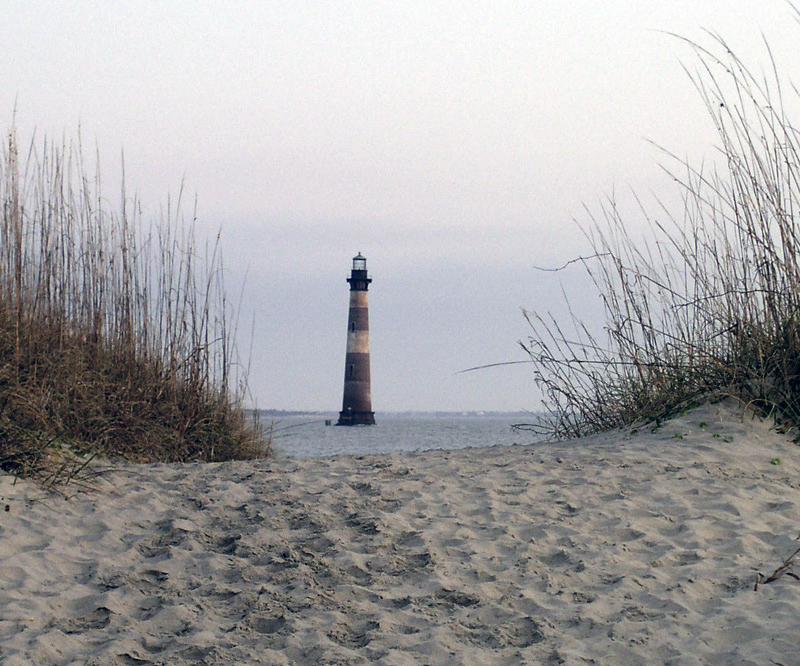
Erected in 1876 and extinguished in 1962, Morris Island Lighthouse now stands offshore in the surf near Charleston. You cannot access the tower, but the Lighthouse Inlet Heritage Preserve on Folly Beach offers the best view. Sunrise lights the brick shaft and waves break around the base at high tide. Local groups have stabilized the foundation to slow erosion. Bring a telephoto lens for detail and expect seabirds along the shoreline. The walk to the overlook is flat and family friendly.
9. Cockspur Island Lighthouse, Georgia
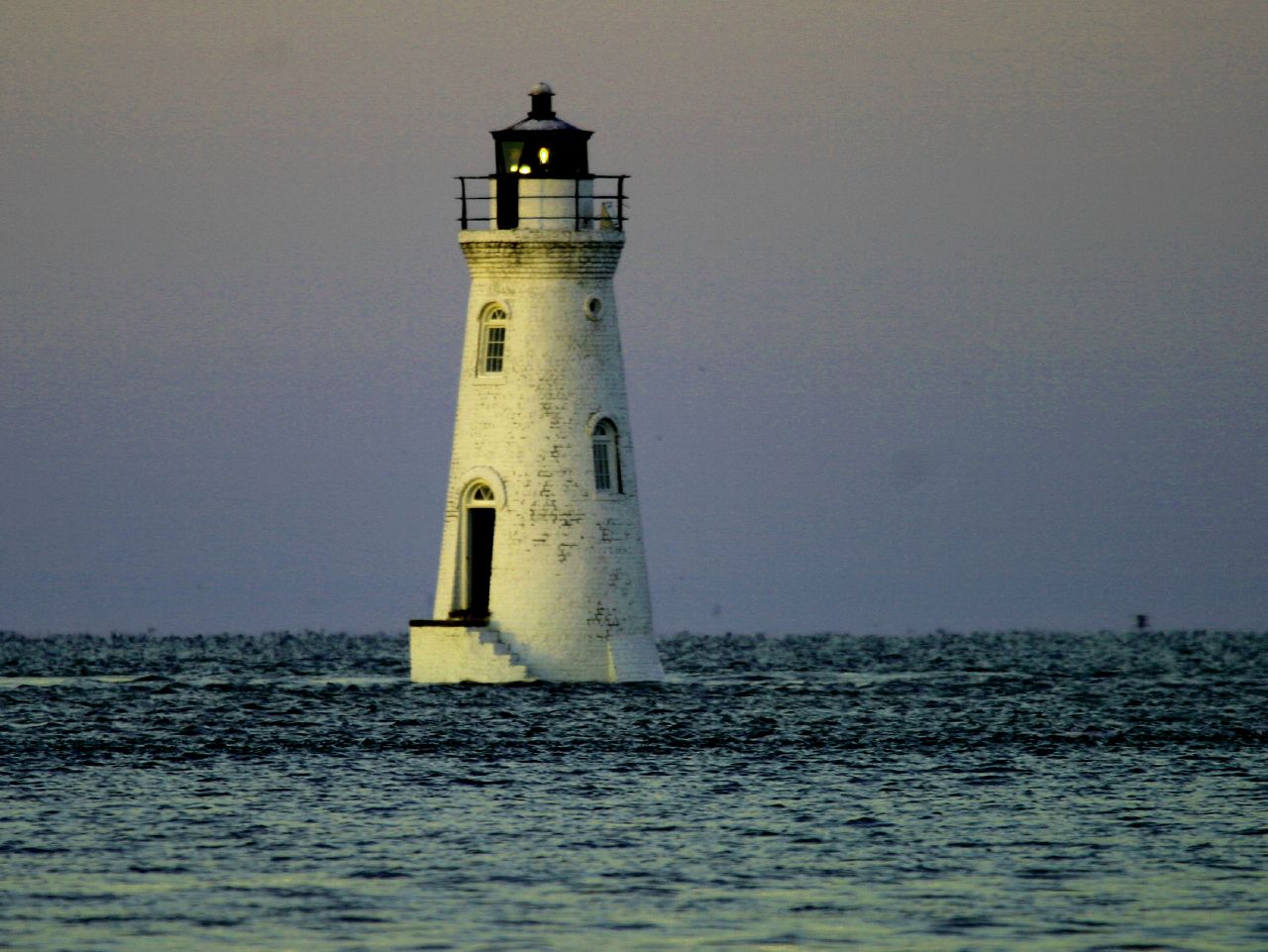
Guarding the Savannah River channel since 1856 and decommissioned in 1909, Cockspur Island Lighthouse sits within Fort Pulaski National Monument. The small brick tower survived Civil War bombardment and can be viewed from trails or by kayak at calm tide. Rangers post wildlife and access notes at the visitor center. Shorebirds and spartina grass make the scene feel timeless. Even without entering the structure, the site delivers strong history in a compact footprint a short drive from downtown Savannah.
10. Execution Rocks Lighthouse, New York
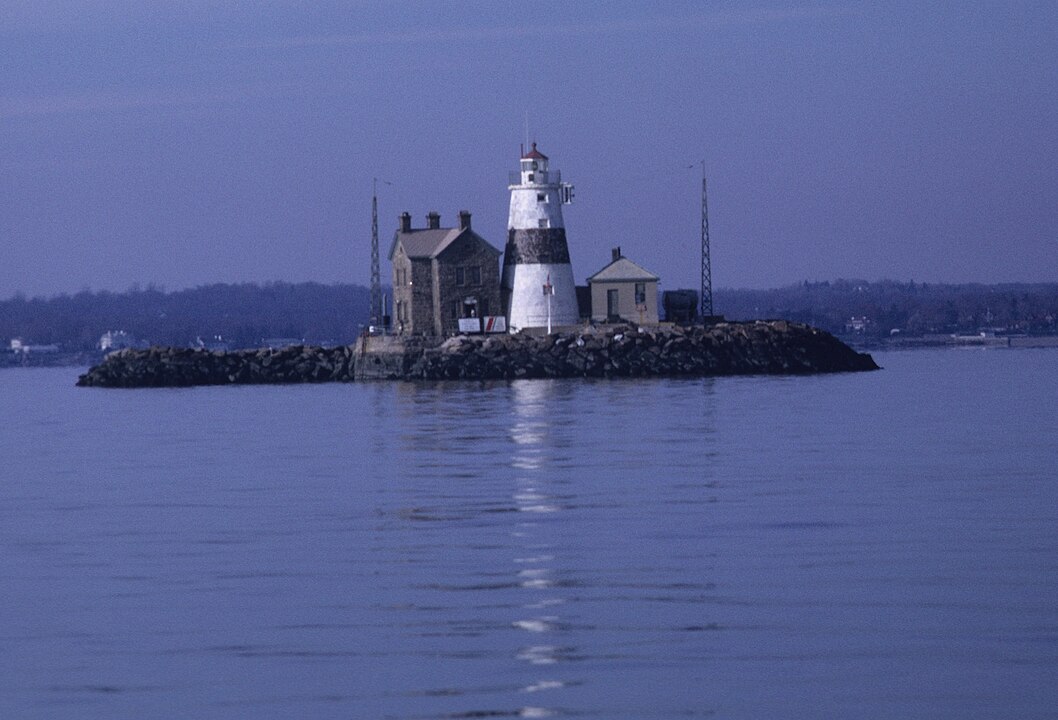
Execution Rocks in Long Island Sound was completed in 1849 to mark a dangerous reef. The station stood abandoned for years before restoration groups opened limited boat access tours. Weather and seas decide the schedule, so plan ahead. From the water you can see the granite base and the tapered brick tower that once warned ships bound for New York Harbor. Shoreline parks provide distant views if boats are not running. The name is memorable, but the real story is navigation safety.
11. Sabine Pass Lighthouse, Louisiana
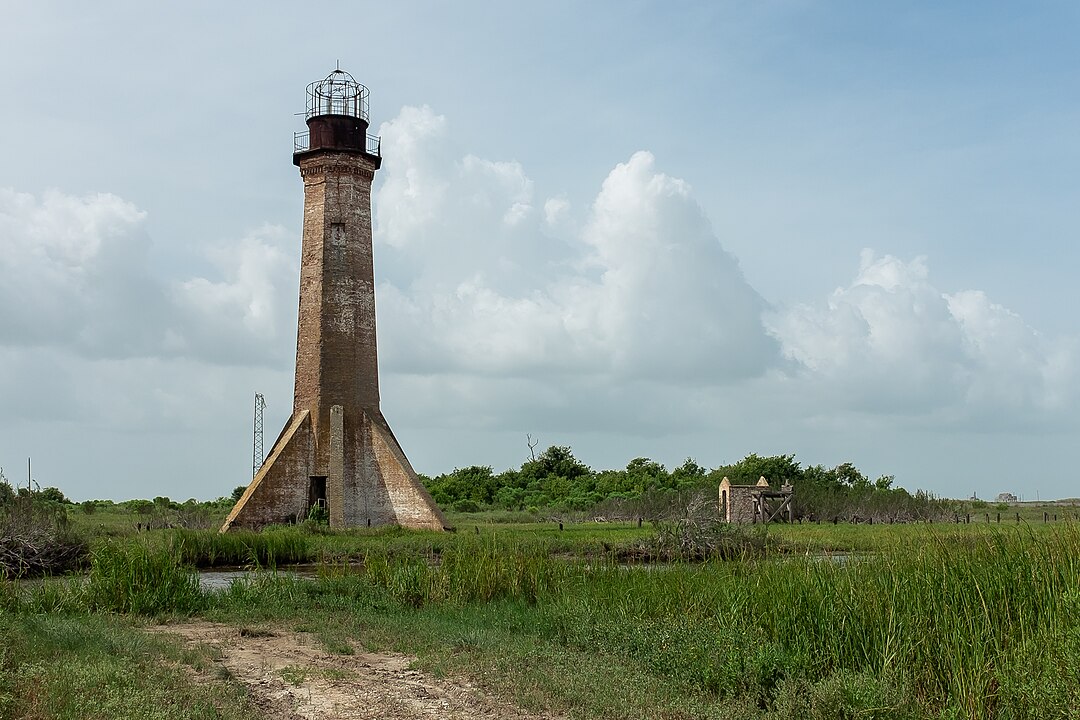
Raised in 1856 near the Texas line, Sabine Pass Lighthouse was retired in 1952 and remains one of the Gulf Coast’s most striking towers. The brick core and exterior buttresses create a slim pyramidal profile visible for miles across marsh. The site sits on private property, so interior access is rare and tied to special events, but you can view the lighthouse from nearby roads and levees. Restoration work continues in phases. Bring binoculars for details and expect coastal birds year-round.
